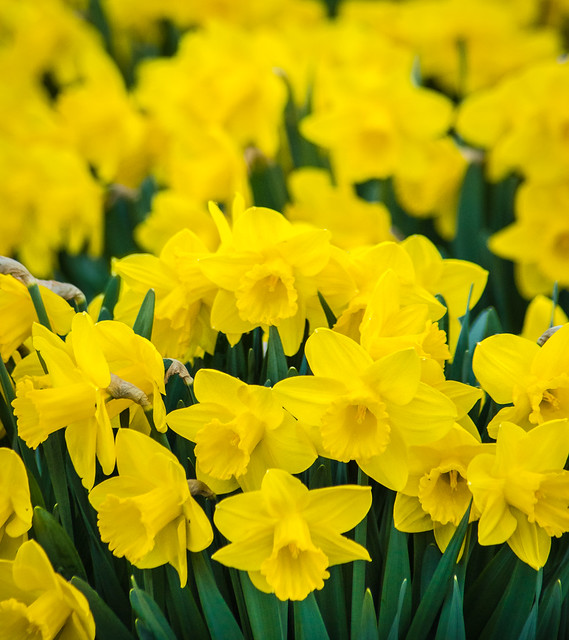The Daffodil Patch
 Daffodils are always a cheerful delight. Though short-lived, they are bright and vigorous springtime bloomers.
Daffodils are always a cheerful delight. Though short-lived, they are bright and vigorous springtime bloomers.
This particular patch is one of my favorite. Each spring, those driving north through Algoma,WI on highway 42 will find this plentiful display of yellow daffodils on the right side of the road, just before you descend the hill on the south side of town. My thanks and compliments to the homeowner who provide these well-cared-for beauties.
The daffodil is of the Narcissus genus – predominantly spring perennial plants in the Amaryllidaceae (amaryllis) family. Those in the Narcissus classification are easy to identify by their flowers with six petal-like tepals surmounted by a cup- or trumpet-shaped corona. According to Wikipedia, historical accounts suggest narcissi have been cultivated from the earliest times, but became increasingly popular in Europe after the 16th century and by the late 19th century were an important commercial crop centered primarily on the Netherlands. Today narcissi are popular as cut flowers and as ornamental plants in private and public gardens.
Like other members of their family, narcissi produce a number of different alkaloids, which provide some protection for the plant, but may be poisonous if accidentally ingested. This property has been exploited for medicinal use in traditional healing and has resulted in the production of galantamine for the treatment of Alzheimer’s dementia. Long celebrated in art and literature, narcissi are associated with a number of themes in different cultures, ranging from death to good fortune, and as symbols of spring. The daffodil is the national flower of Wales and the symbol of cancer charities in many countries.
You can view a larger version of this image by simply clicking on the photo.
All of the photos I post are available for purchase. If you’d like to buy one, click on the blue “Buy this Online” bar below for a variety of print and frame options or contact me for digital purchase and licensing options.






















































